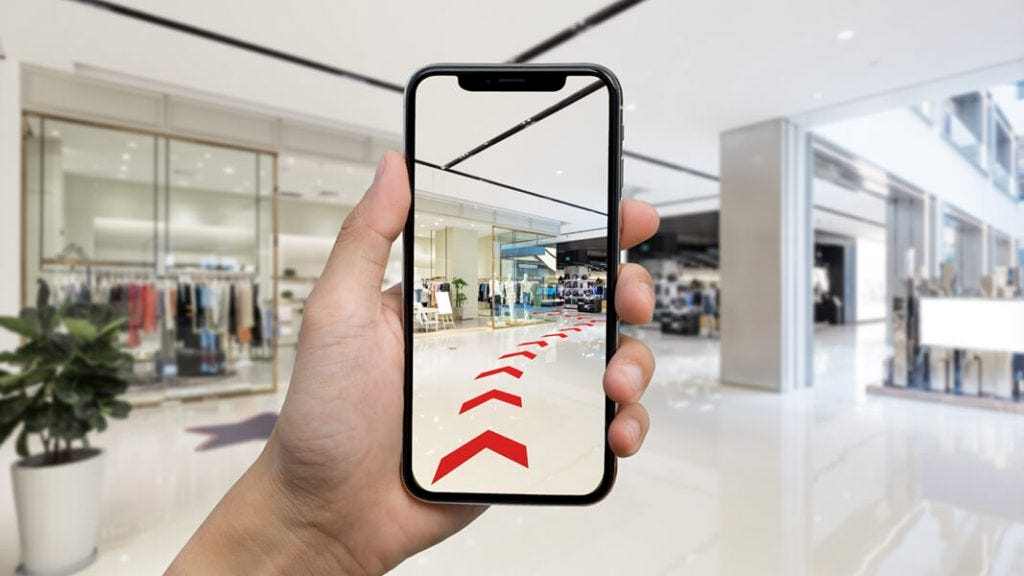Augmented Reality (AR) has moved beyond gaming and entertainment, revolutionizing how we navigate indoor spaces. Whether you’re in a sprawling airport, a multi-level mall, or a vast hospital complex, AR indoor navigation offers a seamless and intuitive wayfinding experience. But how does this technology work, and what makes it so effective? Let’s dive into the inner workings of AR indoor navigation.
The Basics of AR Indoor Navigation
At its core, it overlays digital information onto the real world through a device’s camera, typically a smartphone or tablet. This digital information can include directional arrows, virtual pathways, distance markers, points of interest (POIs), and other relevant details. By blending the physical and digital realms, the navigation transforms the way we perceive and interact with indoor environments, enhancing our understanding and security with various types of computer security integrated into the system.

Key Technologies Powering AR Indoor Navigation
Several key technologies work together to enable accurate and reliable AR indoor navigation:
- Simultaneous Localization and Mapping (SLAM): SLAM is a cornerstone of AR. It allows the device to create a real-time map of the indoor environment while simultaneously tracking its position within that map. This is achieved by analyzing visual data from the camera and using algorithms to calculate distances and orientations.
- Sensor Fusion: Modern smartphones and tablets are equipped with various sensors, including accelerometers, gyroscopes, and magnetometers. Sensor fusion combines data from these sensors to enhance the accuracy of localization and tracking.
- Visual Positioning Service (VPS): VPS leverages pre-existing visual data of the indoor environment to improve the accuracy and robustness of localization. This can include images, point clouds, or even 3D models of the space.
- Computer Vision: Computer vision algorithms play a crucial role in identifying and tracking features in the environment, such as corners, edges, and textures. This helps in refining the SLAM process and ensuring accurate positioning.
How AR Indoor Navigation Works in Practice
The process of the indoor navigation typically involves the following steps:
- Map Creation: An initial map of the indoor environment is created, either manually or through automated SLAM. This map serves as the foundation for localization and navigation.
- Localization: When a user launches an indoor navigation app, the device’s camera captures visual data of the surroundings. This data is compared to the pre-existing map to determine the user’s precise location.
- Path Planning: Once the user’s location is determined, the app calculates the optimal path to the desired destination. This path is displayed as virtual arrows or a pathway overlaid on the camera feed.
- Guidance: As the user moves, the app continuously updates the position and adjusts the navigation instructions accordingly. This ensures that the user stays on track and reaches the destination seamlessly.
Benefits of AR Indoor Navigation
It offers several advantages over traditional wayfinding methods:
- Intuitive and User-Friendly: AR navigation eliminates the need to interpret complex maps or follow cryptic directions. The virtual guidance is intuitive and easy to follow.
- Reduced Cognitive Load: By providing clear visual cues, AR navigation reduces the cognitive load on users, allowing them to focus on their surroundings and activities.
- Enhanced Accessibility: AR navigation can be particularly beneficial for people with disabilities, as it can provide audio cues and customized guidance.
- Improved Efficiency: AR navigation can lead to faster and more efficient wayfinding, especially in large and complex indoor spaces.
The Future of AR Indoor Navigation
The future of AR indoor navigation looks promising. As technology advances, we can expect even more accurate, immersive, and personalized navigation experiences. The integration of AR with other technologies, such as Artificial Intelligence (AI) and Internet of Things (IoT), will open up new possibilities for smart buildings and intelligent wayfinding systems.






